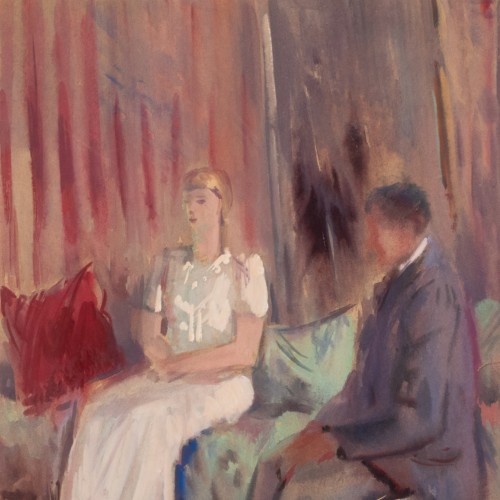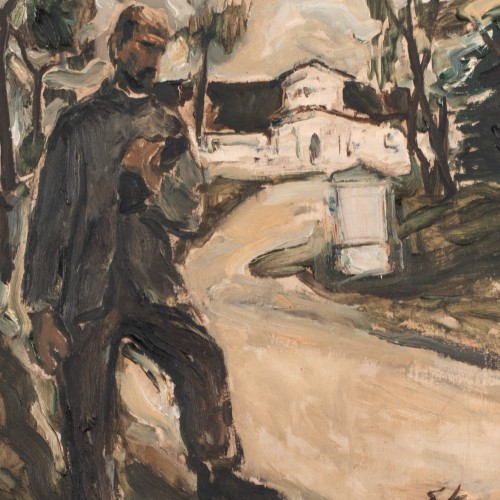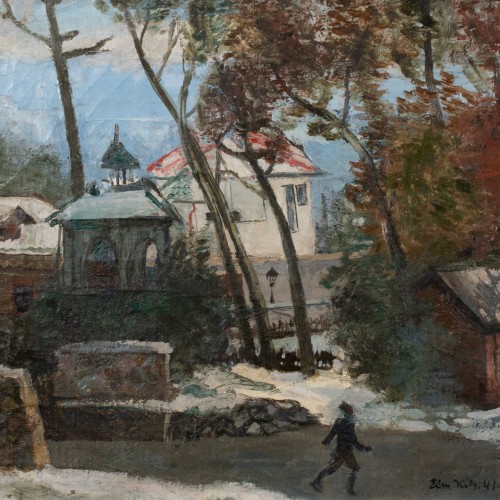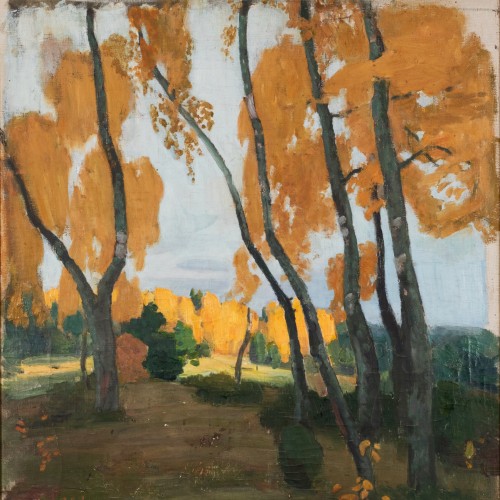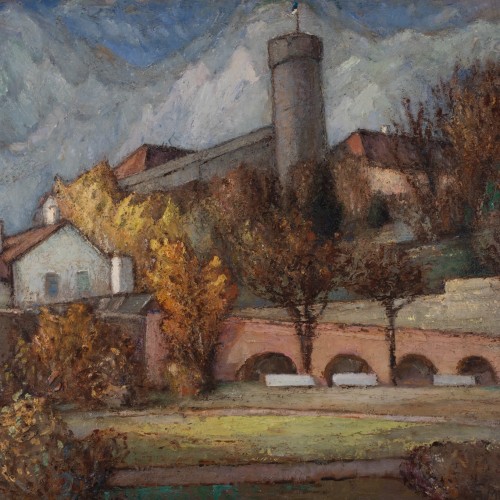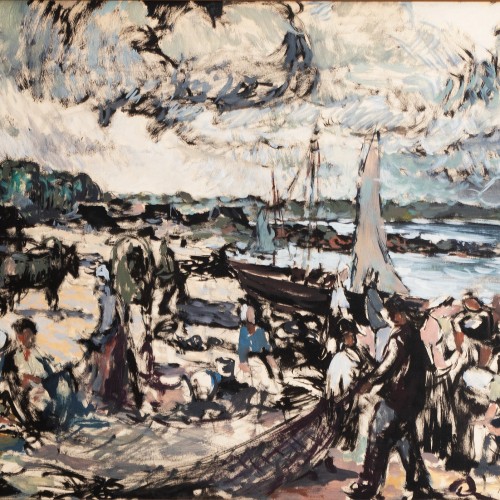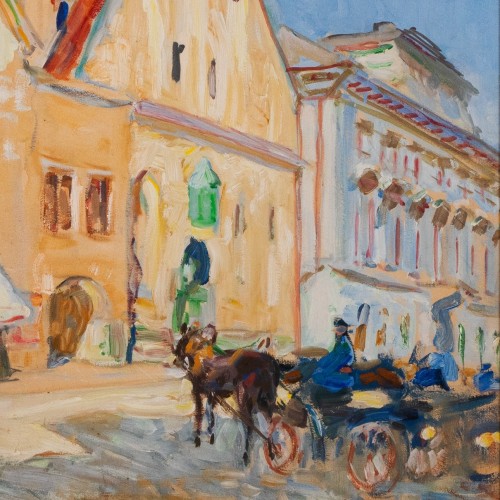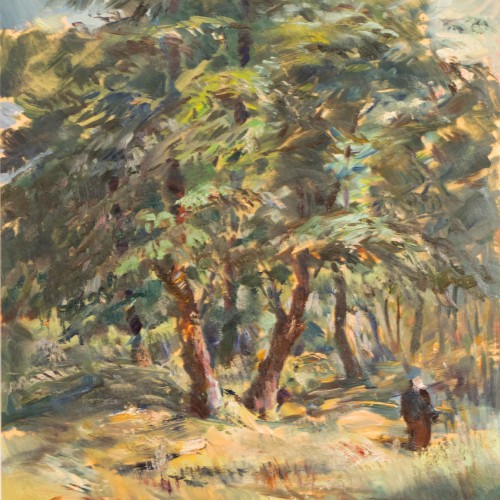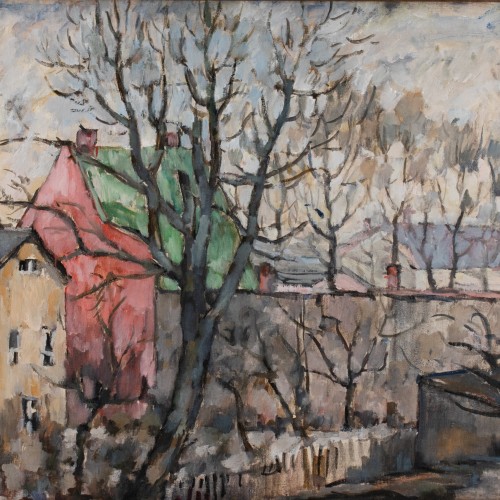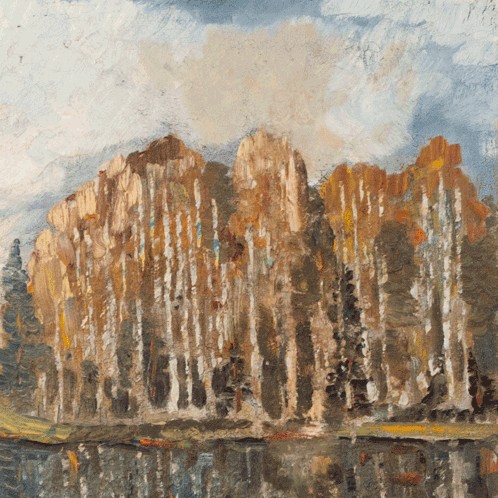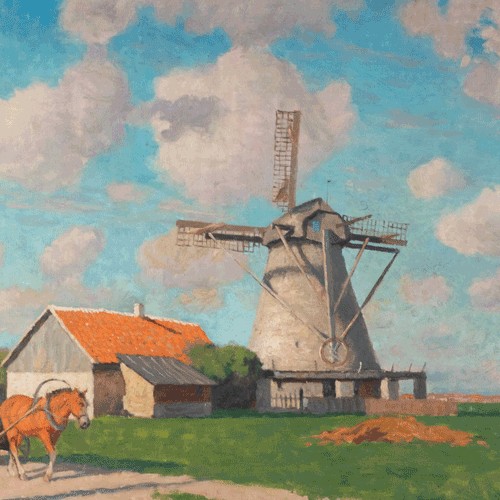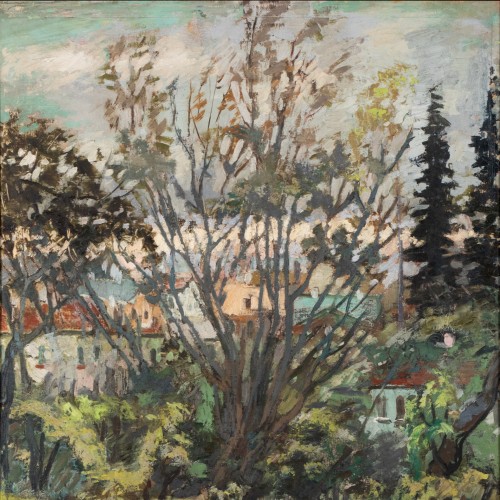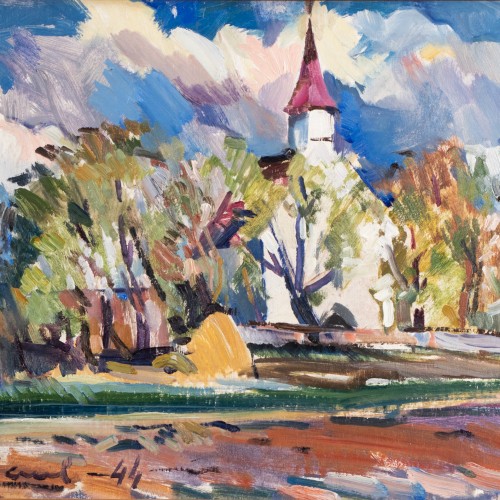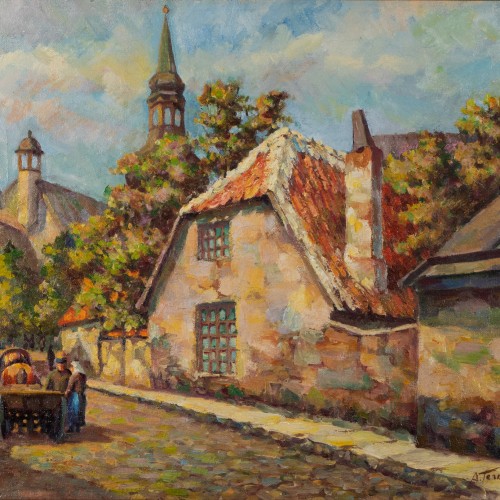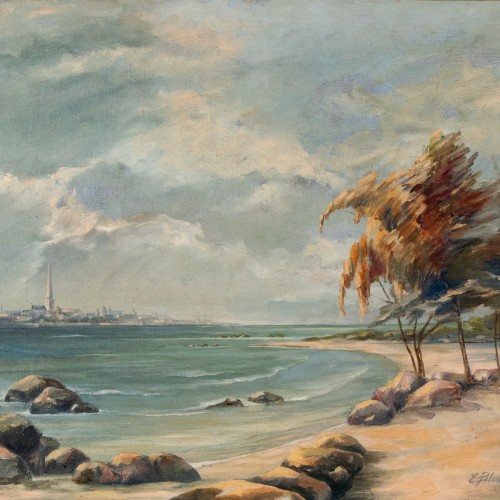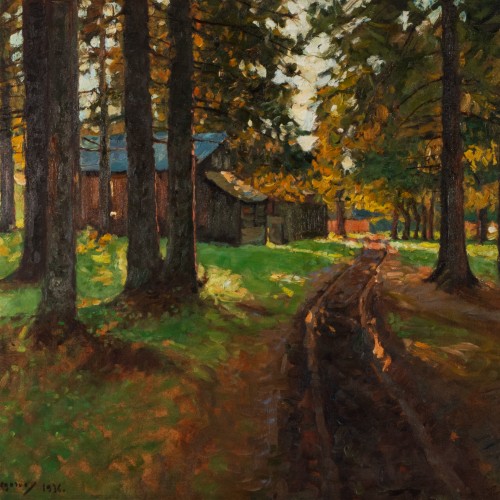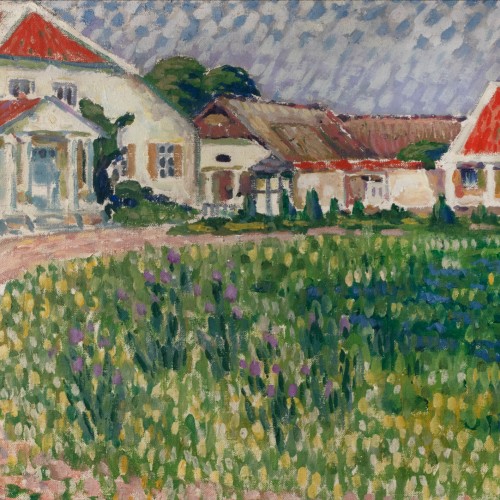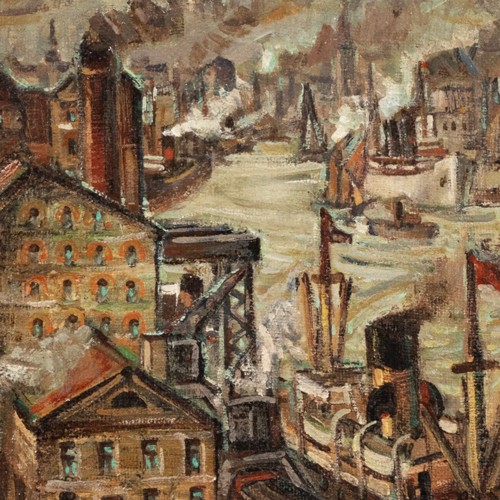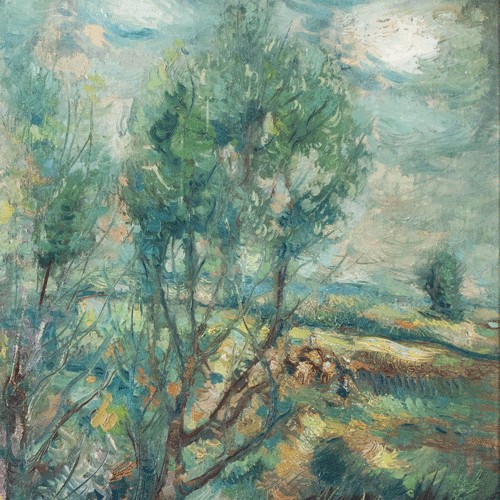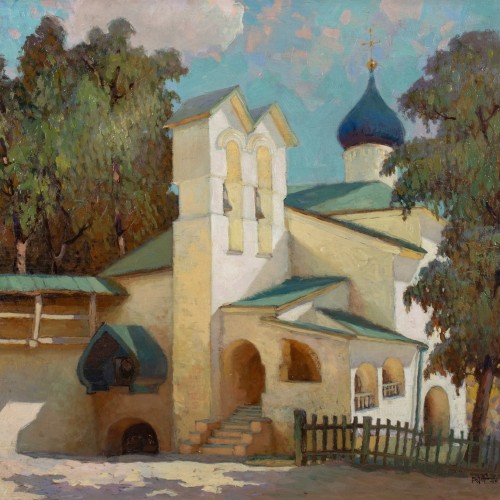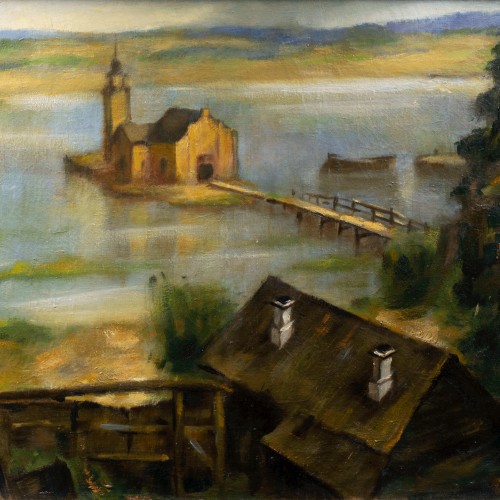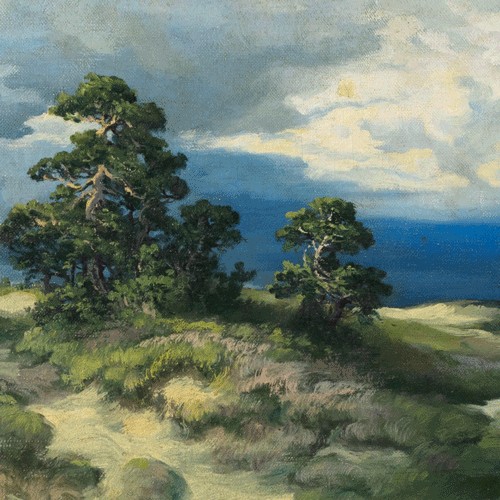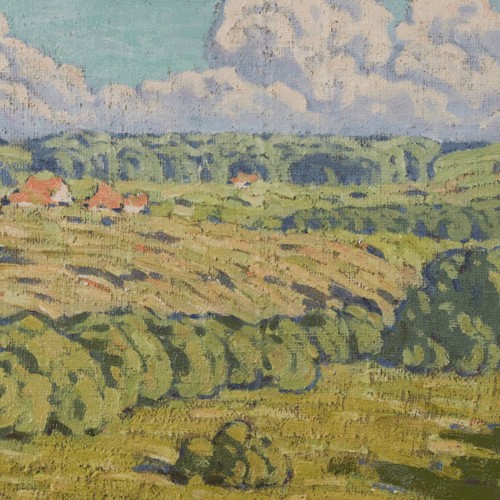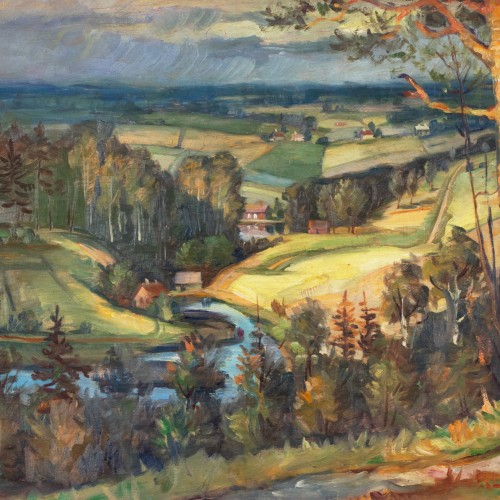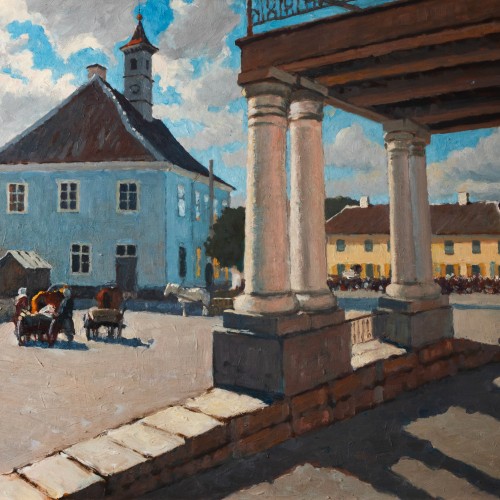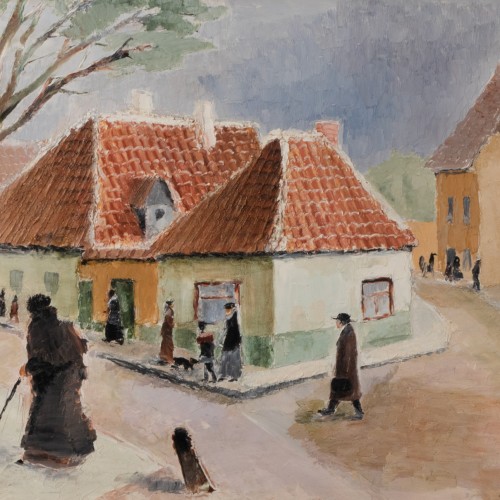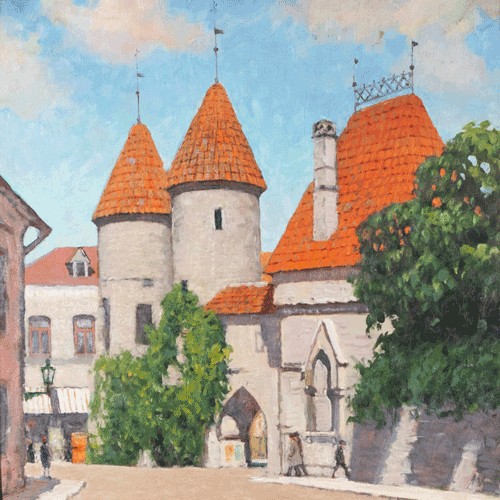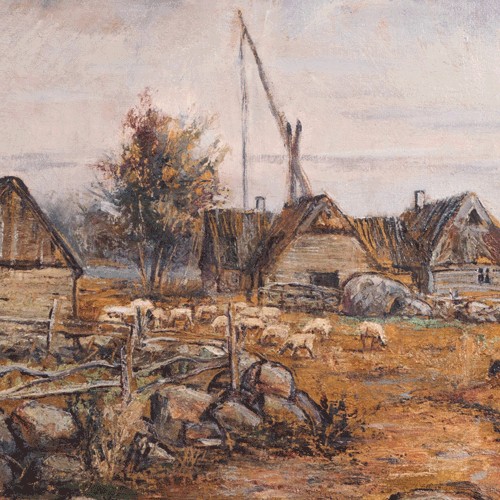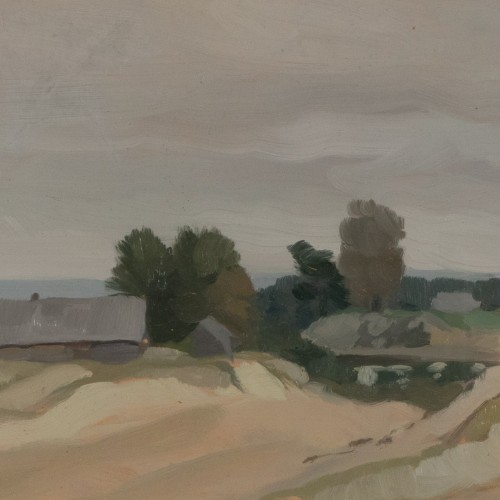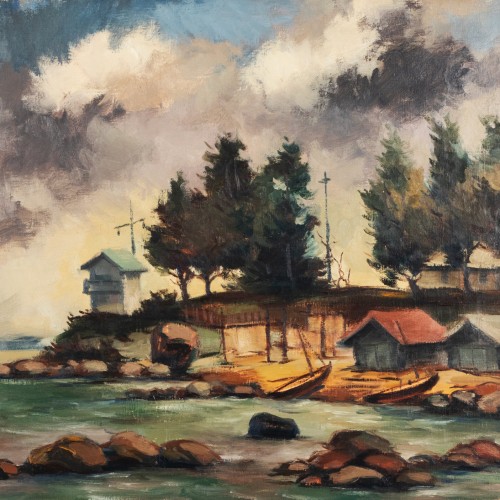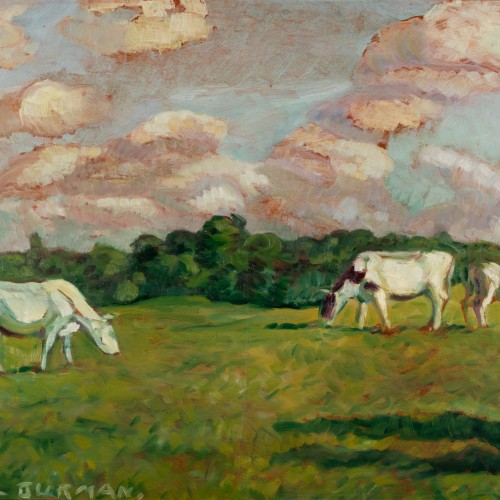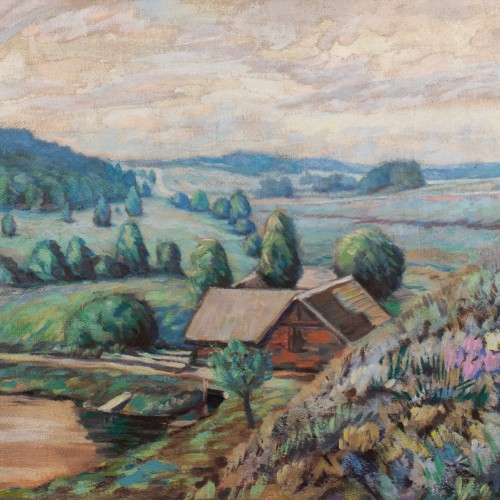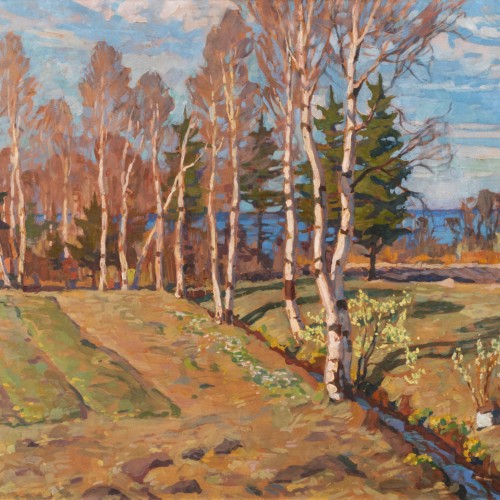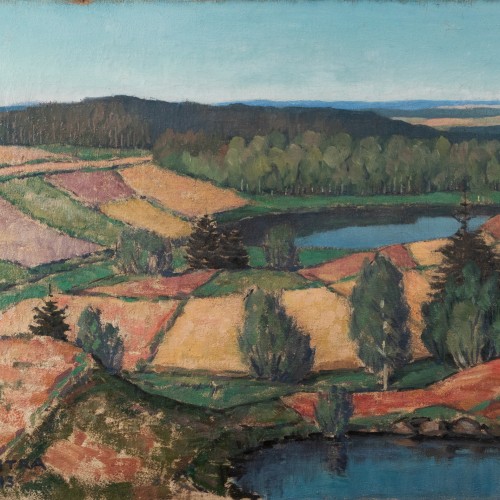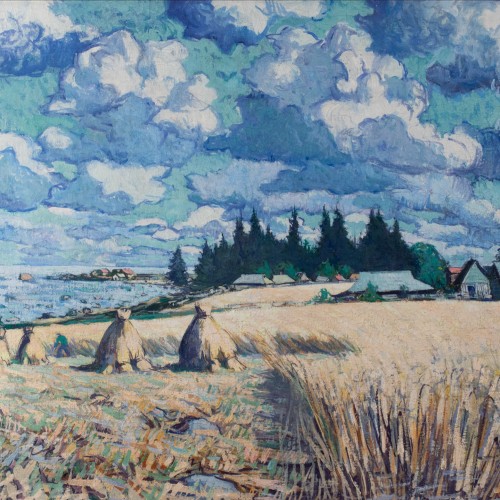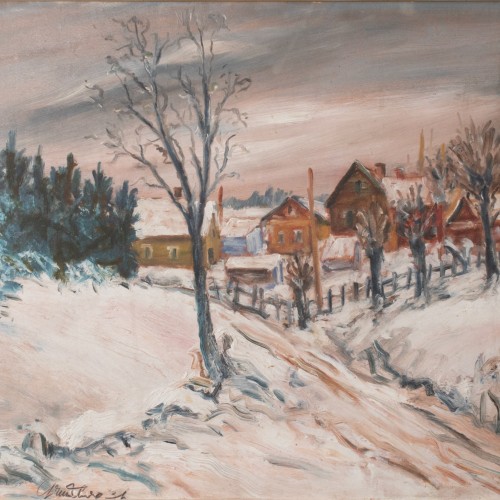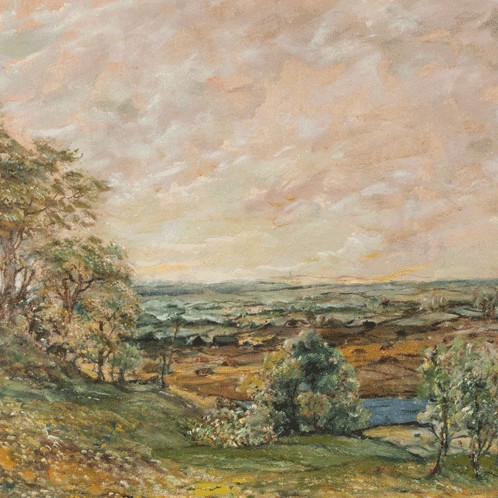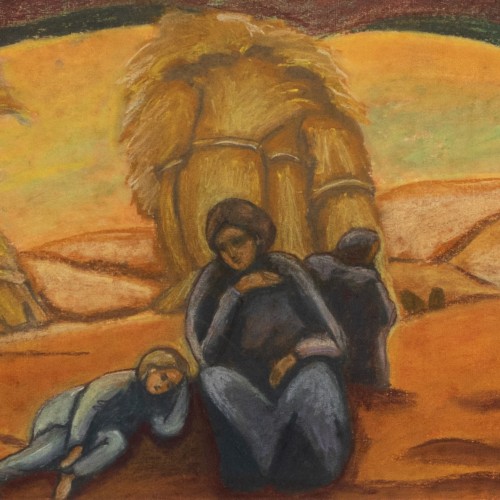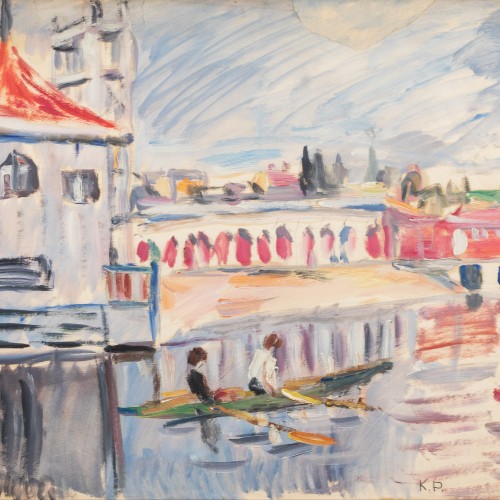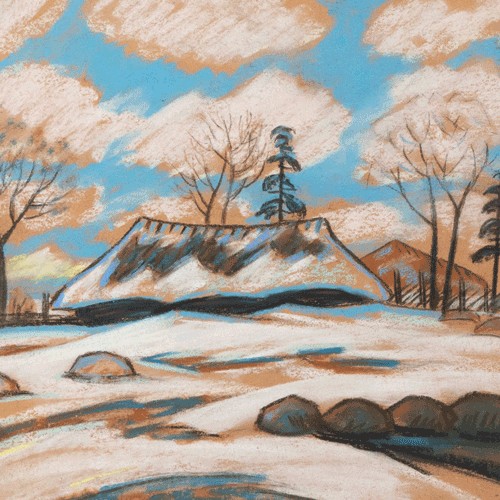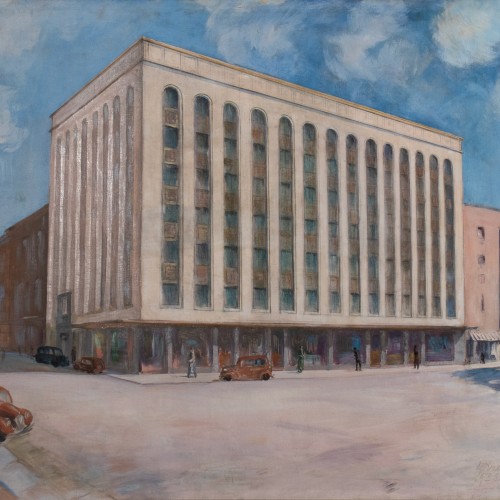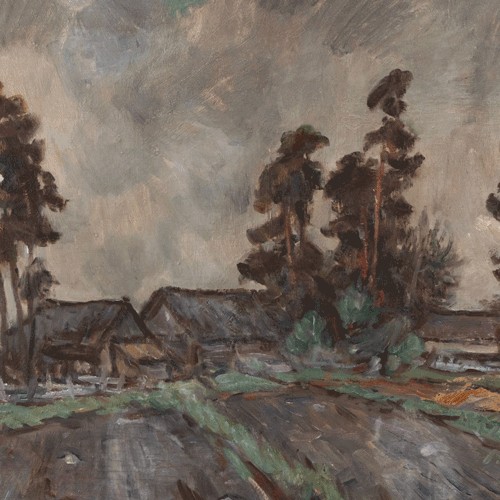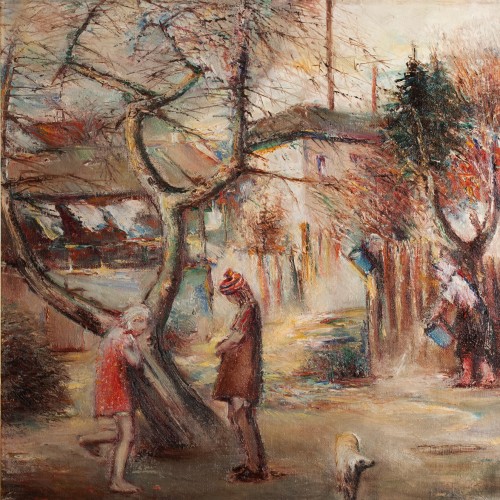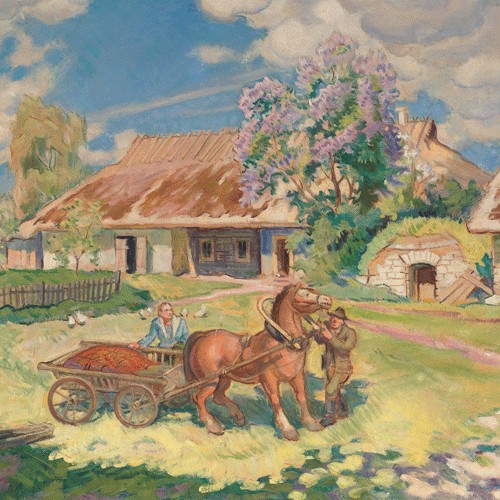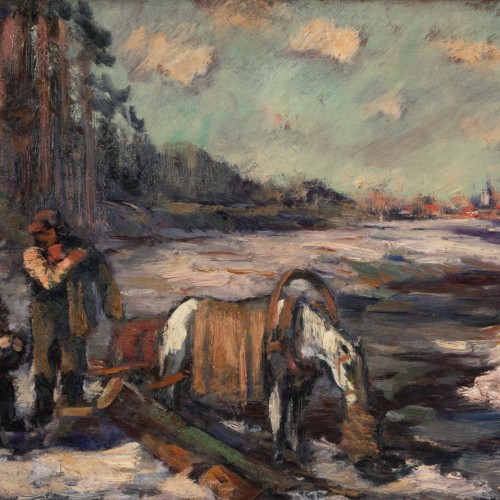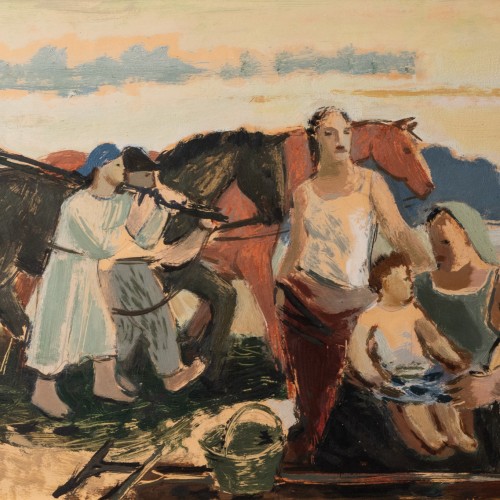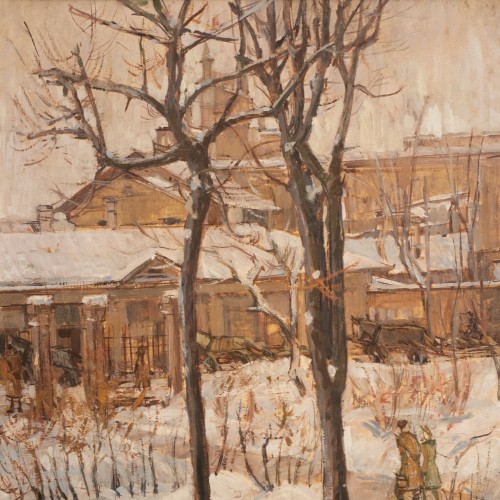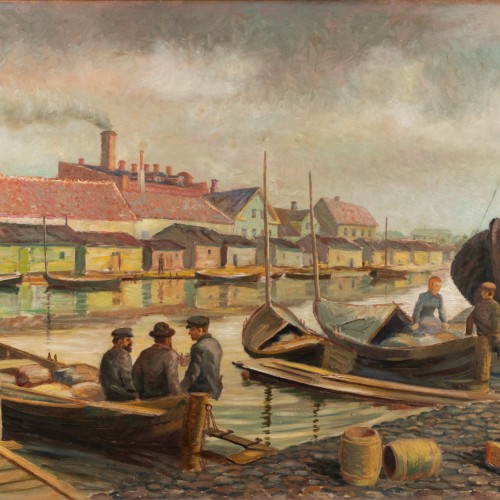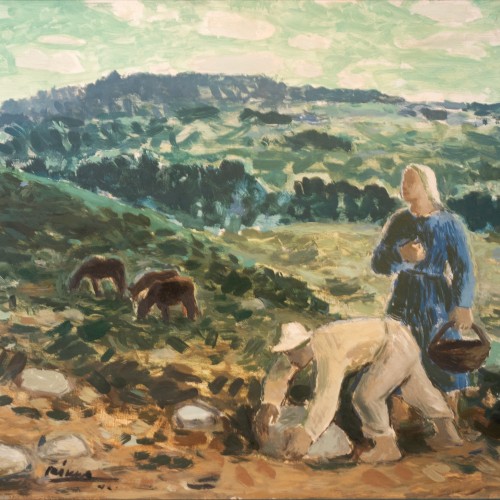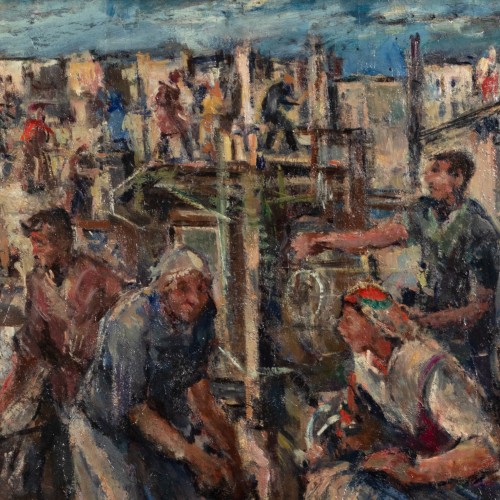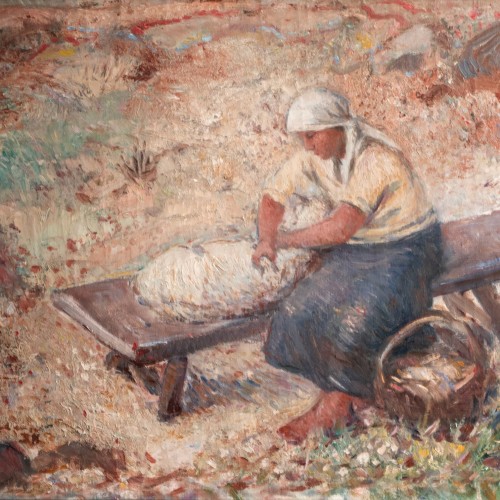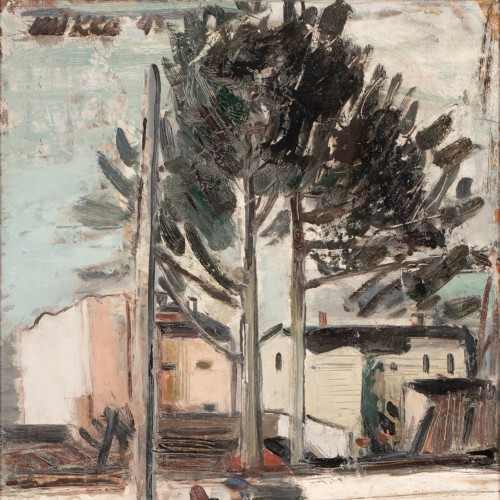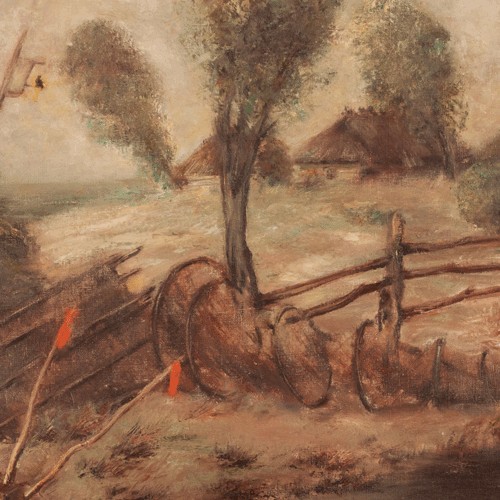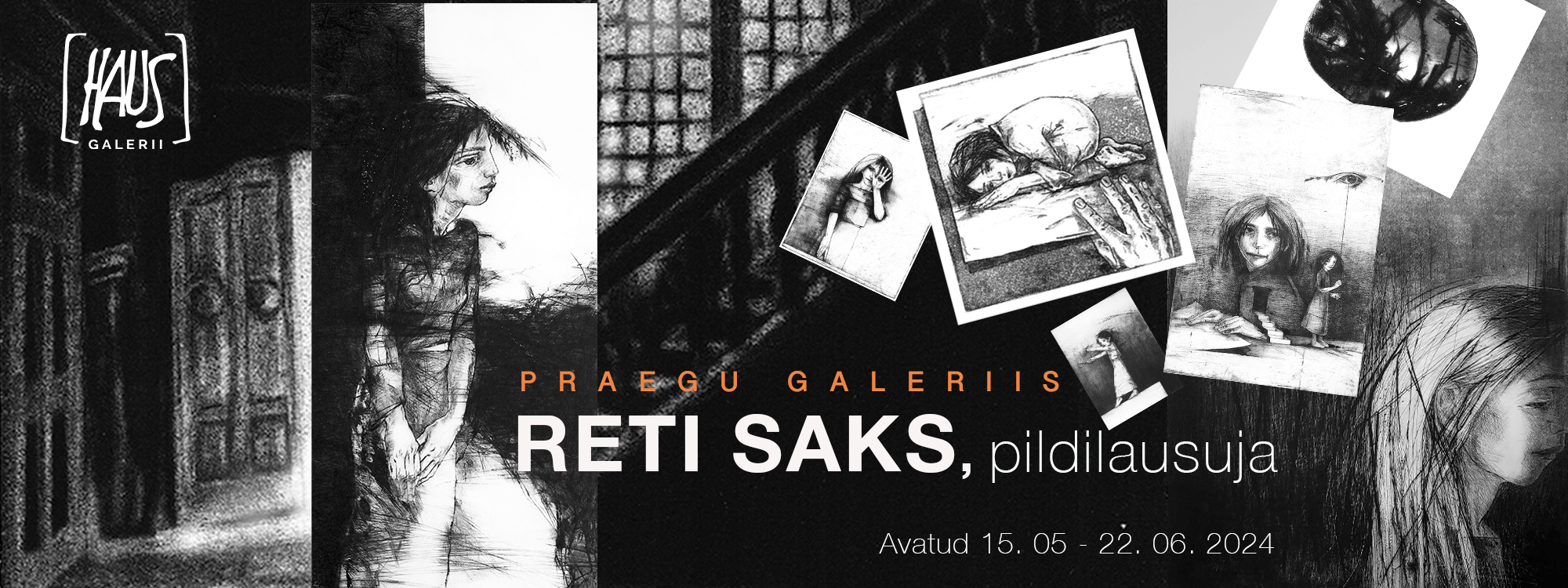Exhibition > Past > Haus Gallery
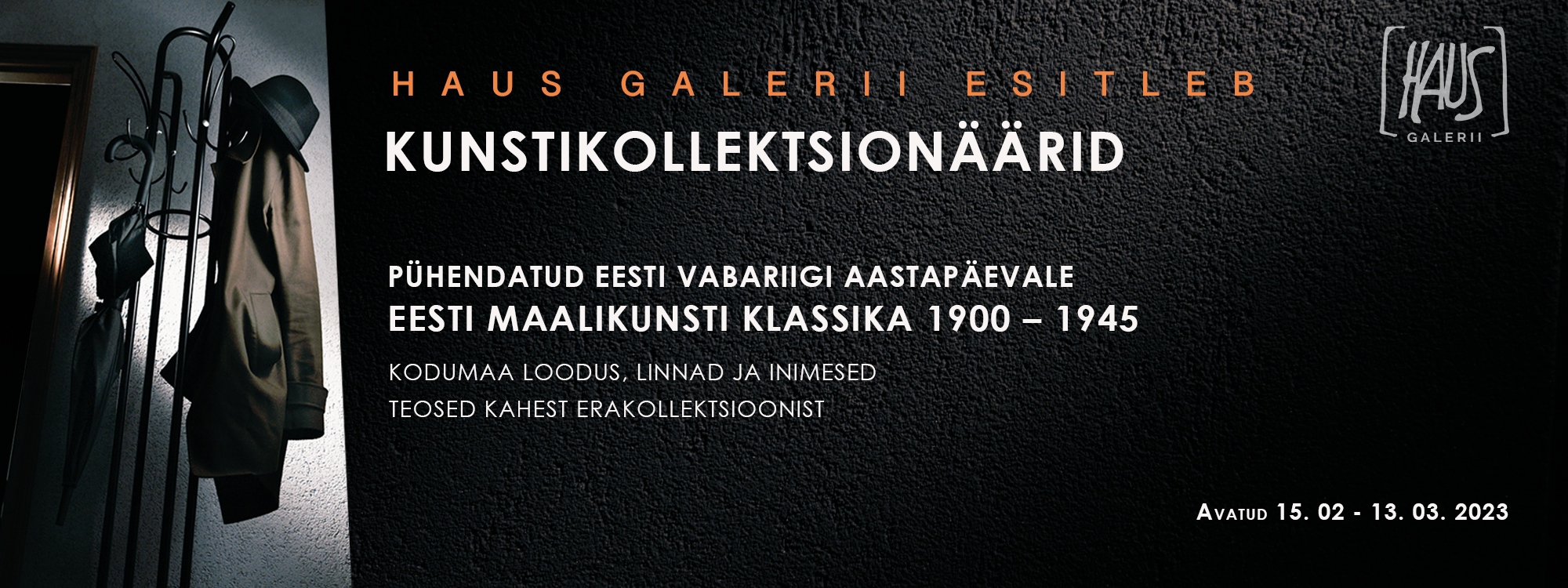
Haus Gallery 15.02.2023-13.03.2023
WORKS FROM TWO PRIVATE COLLECTIONS
ESTONIAN PAINTING CLASSICS 1900-1945
Estonian nature, cities and people
Haus Gallery dedicates the month of February to the Republic of Estonia and to Estonian art classics created in the early years of the Republic. The gallery also more broadly brings into sharp and appreciative focus the role of private collectors who value our artistic heritage and contribute to its preservation, often modestly deeming their own personalities unworthy of notice. Therefore, let the names of the owners/collectors of the works in this exhibition also remain unmentioned here. We are talking about the art collector as someone who has played a major role in history and whose private collections have given birth to some of the world’s most prestigious art museums.
To be more specific, we would like to reveal that both collectors live in Tallinn and have worked in professions that are quite far removed from art. Nonetheless, they both developed a deeper interest in art early on, and in the past few decades, they have begun to collect art systematically. Both collections are dominated by pre-World War II paintings, although there is also interest in earlier and later periods. The collectors have lent works to various exhibitions at the Art Museum of Estonia, but this is the first time that both collections have been shown to the public on such a large scale.
The two exhibition halls of the Haus Gallery feature a large selection of paintings from 1900 to 1945, with nearly 60 works on display. The exhibition provides a meaningful opportunity to observe the reflection in art of a number of important and often dramatic events in Estonian history, bringing together different views of Estonian landscapes, situations, and people. We see both idyllic greenery and the reconstruction of shattered cities, spirited living and contemplative melancholy. The paintings depict mothers as well as ordinary city dwellers, landscapes ranging from green wooded hills to foggy shores, the cities of Tallinn and Tartu – and much more. Each of these works could be discussed in more detail, but we will just make a few brief stops here.
Among the domestic landscapes, the tone will be set by works created in the favourite places of the older generation of Estonian artists: Southern Estonia, Lääne County, and Saaremaa island. The landscapes are harmonious and devoid of people: nature lives in harmony with itself, with no conflicts, threats, or tensions. There is often a sense of nostalgia and sentimentality: as the authors were from the countryside, born and raised in the midst of nature, their works also evoke childhood memories. The emphasis is on summer moods, the more oppressive seasons are generally left aside, and this also makes the paintings spacious, bright, and colourful. The deeper intention behind these landscapes seems to be a celebration of the feeling of home and balance, a search for security, and an emphasis on stability. They admire what is there and do not indulge in fantasies.
Alongside this idyllic approach, works depicting foreign places also stand out. Roman Nyman’s excursion to the monastery in Pechory, or Konrad Mägi’s painting, probably created in Norway, are sharper, they notice more details, and there is a certain intensity that calm minds do not perceive when painting familiar places. Mägi’s painting, which is being shown to the public for the first time, is notable for its dense brushwork that is characteristic of the artist, but a similar intensity of work is carried over to all the works in the exhibition. Olev Subbi’s observation that the older generation of Estonian painting is characterised by a focus on colour and a large volume of work, as every square centimetre is thoroughly painted (and often several times), holds true.
Still, especially on the eve of and during World War II, artists begin to introduce existential moods. In the works of Eerik Haamer or Johannes Greenberg, we sense melancholy and contemplation, as if these works were on the front line of spiritual resistance, but after hearing the booming sound of the approaching menace, their colouring becomes serious and their atmosphere anxious.
In addition to landscapes, the exhibition also includes a number of cityscapes, almost all of which look at the urban landscape not through the prism of modernity, but by delving into the earlier layers of the cities. Old towns, ancient towers and passageways, cobbled streets and the like attract the attention of artists far more than a new city with power lines and public transport. The romantic spirit carries not only landscapes but also cityscapes, trying to instil in the viewer an optimistic attitude towards life and the unchanging passage of time, the everlasting and pleasant stillness of everything, and to offer a refuge for the restless mind.
In the depiction of humans, however, more contradictory tones come into play. We see themes that landscape and urban views do not touch, from death to the new living environment of the modern urbanised human. A rare work by Nikolai Kummits alongside a drawing by Kristjan Raud, exhibited for the first time, speak in a serious tone about existential themes, such as motherhood or loneliness, waiting and abandonment, while several authors look admiringly at working people and find important life values in them. This has sometimes been attributed to the demands of the era of silence but once again, the childhood of the artists may have played a role: accustomed as they were to being around people who were constantly working and whose activities were also often in harmony with nature (farmers, fishermen, etc.) – it was in these activities that they found harmony between man and nature. So it can be said that in this exhibition, the artists often return to their childhood – and the exhibition as a whole returns to the childhood of the Republic of Estonia.
Art history text written by Eero Epner
Curators: Eero Epner and Piia Ausman
EXHIBITION IN THE INTERIOR
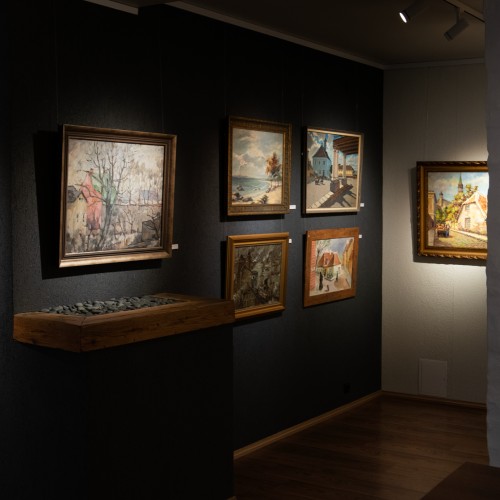
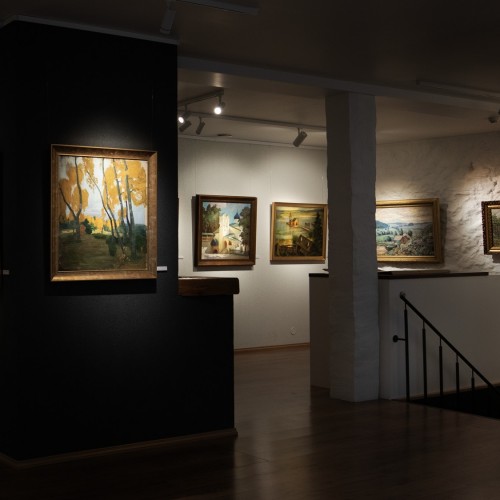
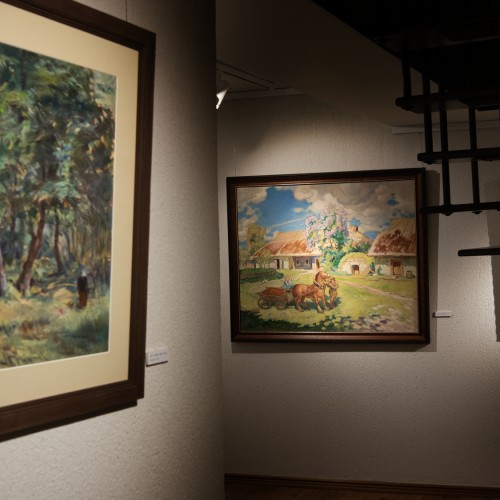
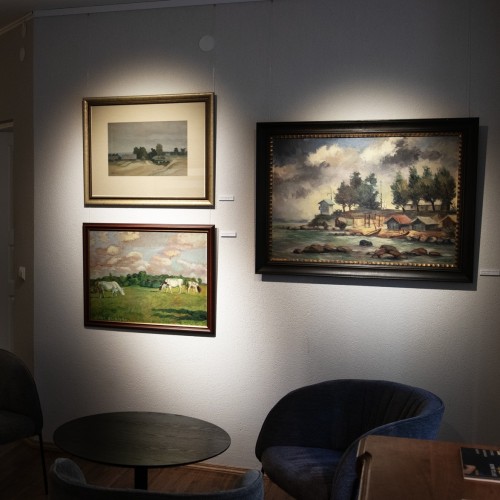
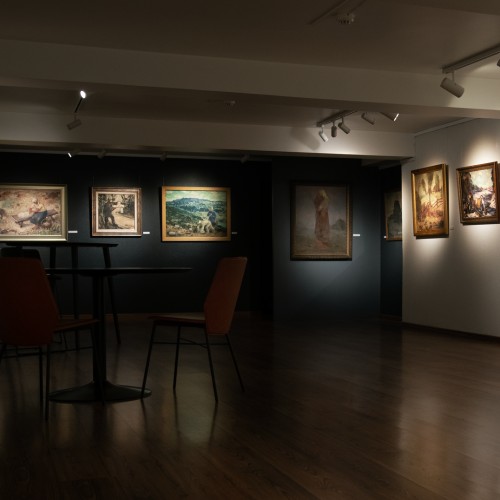
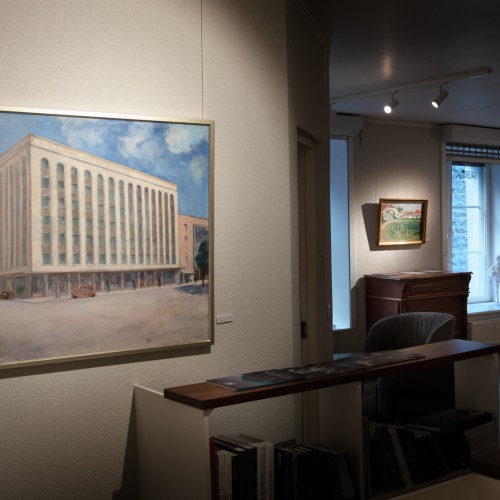
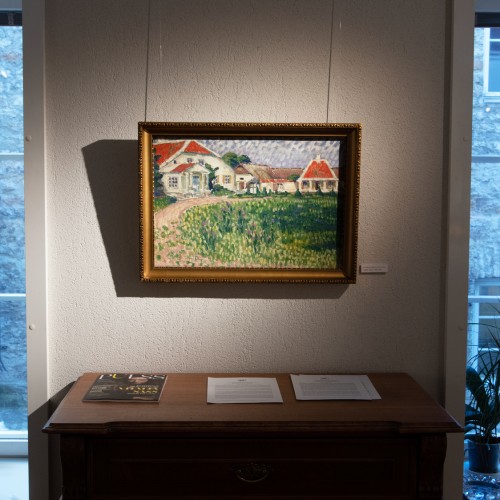
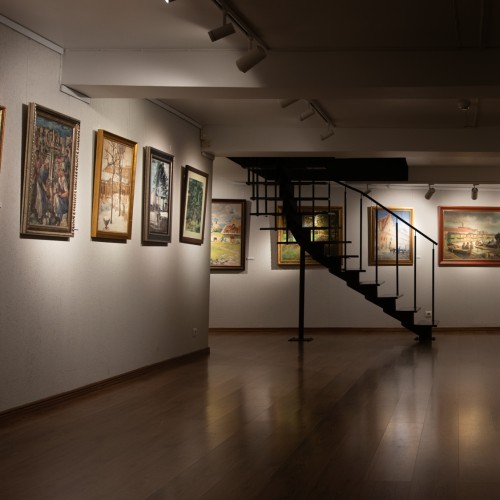
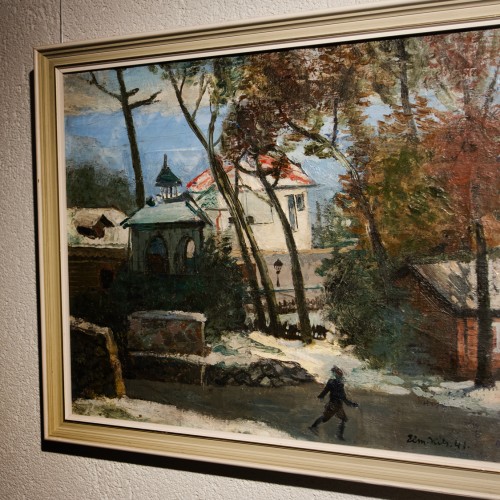
THE CLASSICS OF ESTONIAN PAINTINGS 1900-1945
